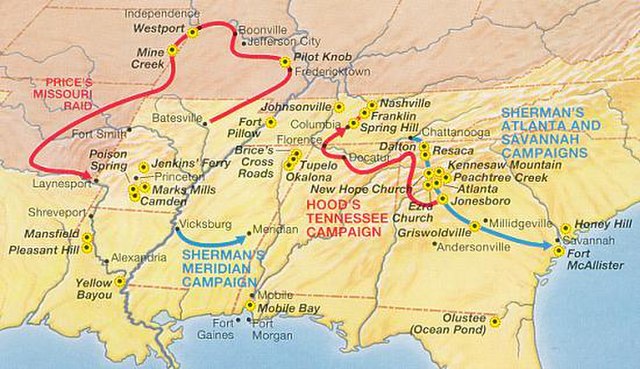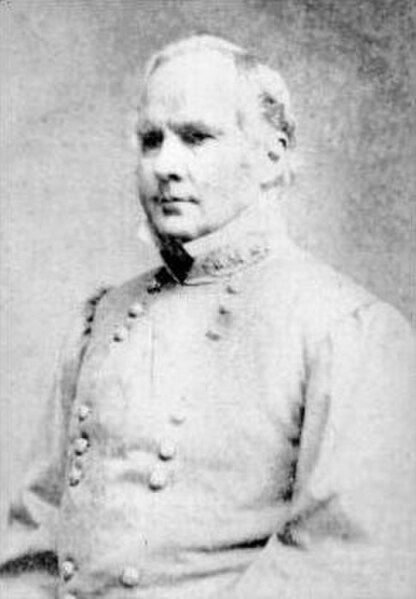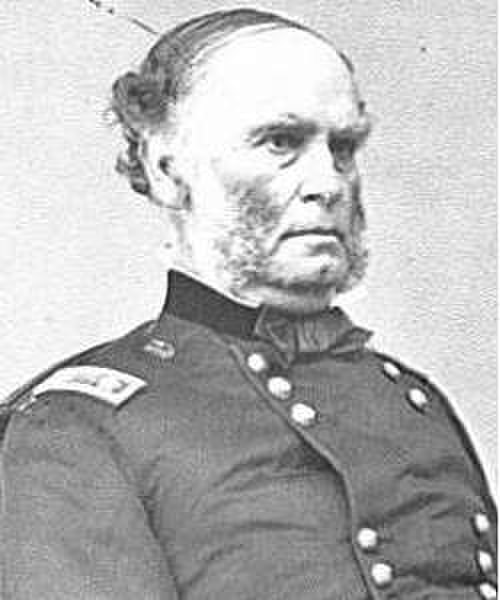Battle of Little Blue River
The Battle of Little Blue River was fought on October 21, 1864, as part of Price's Raid during the American Civil War. Major General Sterling Price of the Confederate States Army led an army into Missouri in September 1864 with hopes of challenging Union control of the state. During the early stages of the campaign, Price abandoned his plan to capture St. Louis and later his secondary target of Jefferson City. The Confederates then began moving westwards, brushing aside Major General James G. Blunt's Union force in the Second Battle of Lexington on October 19. Two days later, Blunt left part of his command under the authority of Colonel Thomas Moonlight to hold the crossing of the Little Blue River, while the rest of his force fell back to Independence. On the morning of October 21, Confederate troops attacked Moonlight's line, and parts of Brigadier General John B. Clark Jr.'s brigade forced their way across the river. A series of attacks and counterattacks ensued, neither side gaining a significant advantage.

Brigadier General Joseph O. Shelby was a key Confederate commander at Little Blue River
Colonel Thomas Moonlight led the initial Union rear guard at the crossing of the Little Blue River.
Brigadier General John B. Clark's brigade was the first Confederate formation to cross the Little Blue River in force.
Price's Missouri Expedition
Price's Missouri Expedition, also known as Price's Raid or Price's Missouri Raid, was an unsuccessful Confederate cavalry raid through Arkansas, Missouri, and Kansas in the Trans-Mississippi Theater of the American Civil War. Led by Confederate Major General Sterling Price, the campaign aimed to recapture Missouri and renew the Confederate initiative in the larger conflict.
The Price Raid by Samuel J. Reader
The strategic situation in the west in 1864.
Maj. Gen. Sterling Price, CSA
Maj. Gen. Samuel R. Curtis, USA







